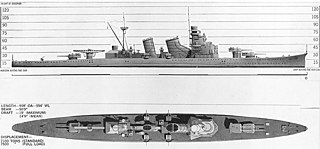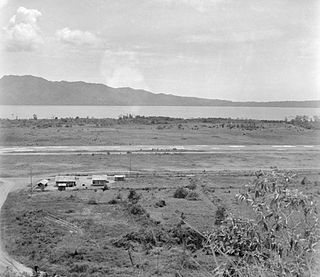 W
WThe Battle of Singapore, also known as the Fall of Singapore, was fought in the South-East Asian theatre of World War II when the Empire of Japan invaded the British stronghold of Singapore—nicknamed the "Gibraltar of the East". Singapore was the major British military base in South-East Asia and was the key to British imperial interwar defence planning for South-East Asia and the South-West Pacific. The fighting in Singapore lasted from 8 to 15 February 1942, after the two months during which Japanese forces had advanced down the Malayan Peninsula.
 W
WThe Bangka Island massacre was committed during World War II in the Pacific, on Bangka Island, east of Sumatra in the Indonesian archipelago. On 16 February 1942, Imperial Japanese soldiers machine-gunned 22 Australian Army nurses and 60 Australian and British soldiers and crew members who had survived the sinking of Vyner Brooke by Japanese bombers. South Australian nurse Sister Lt Vivian Bullwinkel and two soldiers were the sole survivors.
 W
WThe Bataan Death March was the forcible transfer by the Imperial Japanese Army of 60,000–80,000 American and Filipino prisoners of war from Saysain Point, Bagac, Bataan and Mariveles to Camp O'Donnell, Capas, Tarlac, via San Fernando, Pampanga, where the prisoners were loaded onto trains. The transfer began on April 9, 1942, after the three-month Battle of Bataan in the Philippines during World War II. The total distance marched from Mariveles to San Fernando and from the Capas Train Station to Camp O'Donnell is variously reported by differing sources as between 60 and 69.6 miles. Differing sources also report widely differing prisoner of war casualties prior to reaching Camp O'Donnell: from 5,000 to 18,000 Filipino deaths and 500 to 650 American deaths during the march. The march was characterized by severe physical abuse and wanton killings, and was later judged by an Allied military commission to be a Japanese war crime.
 W
WIn March 1944, a force of three Imperial Japanese Navy (IJN) heavy cruisers raided Allied shipping in the Indian Ocean. The cruisers departed Japanese-held territory on 1 March with the support of other IJN vessels and aircraft. On 9 March, they encountered and sank the British steamer Behar, with the heavy cruiser Tone picking up over 100 survivors. Fearing detection, the Japanese force subsequently returned to the Netherlands East Indies (NEI), arriving on 16 March. Two days later, most of Behar's crew and passengers were murdered on board Tone. Following the war the commander of the raid, Rear Admiral Naomasa Sakonju, was executed for this war crime and Tone's captain Haruo Mayuzumi (ja:黛治夫) was sentenced to seven years imprisonment.
 W
WThe De La Salle Brothers - Philippine District is part of the Institute of the Brothers of the Christian Schools, the largest congregation of Roman Catholic religious Brothers who are exclusively dedicated to education. The Institute was founded in Reims, France in 1680, with over 75,000 Brothers and lay colleagues who conduct schools as well as educational works in about 82 countries worldwide.
 W
WThe Jesselton revolt was a revolt by a resistance movement known as the Kinabalu Guerrillas, comprising local Chinese, indigenous peoples, Eurasian and Sikh Indian of Jesselton, North Borneo and led by Albert Kwok, against the Japanese occupying forces of North Borneo.
 W
WThe Battle of Ambon occurred on the island of Ambon in the Dutch East Indies, during World War II. Japan invaded and conquered the island in a few days, facing Dutch, American and Australian forces. The chaotic and sometimes bloody fighting was followed by a series of major Japanese war crimes.
 W
WThe Manila massacre, also called the Rape of Manila, involved atrocities committed against Filipino civilians in the City of Manila, the capital of the Philippines, by Japanese troops during the Battle of Manila which occurred during World War II. The total number of civilians who were killed during the battle of Manila was about 100,000.
 W
WThe March 1st Movement, also known as the Sam-il (3-1) Movement, was one of the earliest public displays of Korean resistance during the rule of Korea by Japan from 1910 to 1945. The event occurred on March 1, 1919, hence the movement's name, literally meaning "Three-One Movement" or "March First Movement" in Korean. It is also sometimes referred to as the Man-se Demonstrations.
 W
WŌryoku Maru was a Japanese passenger cargo ship which was commissioned by the Imperial Japanese Navy during World War II as a troop transport and prisoner of war (POW) transport ship. Japanese POW transport ships are often referred to as hell ships, due to their notoriously unpleasant conditions and the many deaths that occurred on board. In December 1944, the ship was bombed by American aircraft, killing 200 Allied POWs. Hundreds more died in the months that followed.
 W
WThe Palawan massacre occurred on 14 December 1944, during World War II, near the city of Puerto Princesa in the Philippine province of Palawan. Allied soldiers, imprisoned near the city, were killed by Imperial Japanese soldiers.
 W
WOn 23 January 1942, the Parit Sulong Massacre in Johor, Malaya was committed against Allied soldiers by members of the Imperial Guards Division of the Imperial Japanese Army. A few days earlier, the Allied troops had ambushed the Japanese near Gemas and blown up a bridge there.
 W
WThe Port Arthur massacre took place during the First Sino-Japanese War from 21 November 1894 for two or three days, when advance elements of the First Division of the Japanese Second Army under the command of General Yamaji Motoharu (1841–1897) killed somewhere between 1,000 and 20,000 Chinese servicemen and civilians in the Chinese coastal city of Port Arthur. The battle is notable for its divergent coverage by foreign journalists and soldiers, with contemporaneous reports both supporting and denying narratives of a massacre by the Japanese military.
 W
WThe Sook Ching was a systematic purge of perceived hostile elements among the Chinese in Singapore and Chinese Malayans by the Japanese military during the Japanese occupation of Singapore and Malaya, after the British colony surrendered on 15 February 1942 following the Battle of Singapore. The purge took place from 18 February to 4 March 1942 at various places in the region. The operation was overseen by the Imperial Japanese Army's Kempeitai secret police and subsequently extended to include the Chinese population in Malaya.
 W
WSS Tjisalak was a 5,787-ton Dutch freighter with passenger accommodation built in 1917 for the Java-China-Japan Lijn and used by the Allies during World War II to transport supplies across the Indian Ocean between Australia and Ceylon. On 26 March 1944, she was torpedoed and sunk by the Japanese submarine I-8 while traveling unescorted. The freighter's crew were subsequently massacred in an infamous naval war crime.
 W
WThe Zhejiang-Jiangxi campaign, also known as Operation Sei-go, was a campaign by the China Expeditionary Army of the Imperial Japanese Army under Shunroku Hata and Chinese 3rd War Area forces under Gu Zhutong in the Chinese provinces of Zhejiang and Jiangxi from mid May to early September 1942.